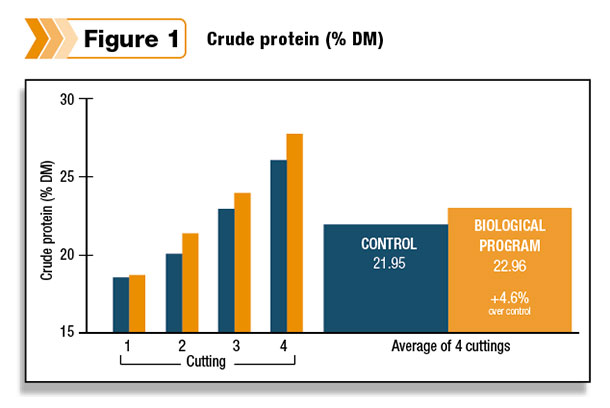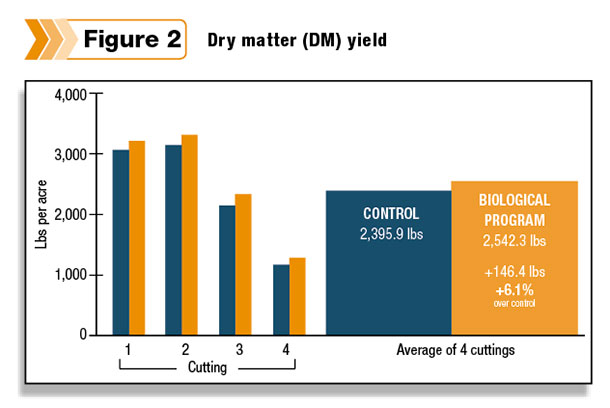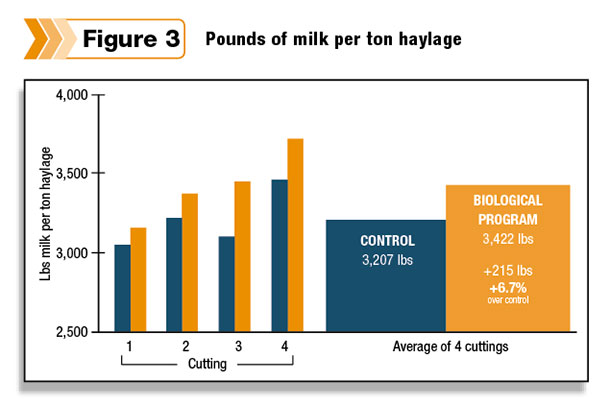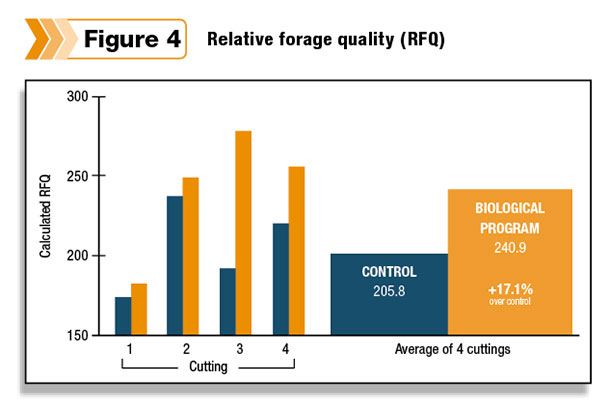Over the last 50 years, we have seen a decline in the nutrient content of our crops; today’s crops have less protein, calcium, vitamins and minerals compared to those of our grandparents.
The same is true with corn and other forage commodities we are feeding our animals (Scott et al., 2006). Over the same period, the economics of our commodities have changed, and new norms have become acceptable regarding higher pricing.
According to the International Farm Comparison Network (2012), feed costs account for 55 percent of the total cost of milk production, but what if these costs could be reduced by enhancing feed quality and quantity? The farmers and ranchers of today must harness new discoveries and technologies that enable them to increase not only yield but also plant quality.
Plants require optimal sunlight, water, temperature and fertile soil, which are rarely found in one place at any one time. Plants depend on microbial partners to survive when one or another of these factors is absent or limited.
Microbes found within the soil increase nutrient availability; improve plant root growth; neutralize toxic compounds; enhance plants’ resistant to disease, heat, flooding and drought; and deter pathogens and predators.
Today’s crop is continuously tested with extreme conditions. Harnessing the nutrient availability in the soil and understanding plants’ needs allows us to improve plant productivity.
The use of nutrigenomics and other technologies have resulted in the development of natural solutions that enhance plant quality and yield. Now scientists can measure the effects of certain nutrients on the genes of plants – not genetically modified organisms – by measuring nutrients and their effect on gene expression.
Today, scientists can measure how nutrients can affect the expression of genes, through which the good genes are up-regulated, or expressed, and the bad genes are down-regulated, or suppressed.
We have formulated a global performance range to promote robust plant development and increase crop potential. The global range includes biostimulants, plant activators and natural fertilizers. By understanding the soil and the plants’ needs, it allows us to improve overall plant health and ultimately drive yield.
While in the past we only thought about plant nutrition coming from fertilizer, this new research significantly changes our perception. It is possible for soil microbes to provide the same, if not more, nutrition when compared to mineral fertilizers.
Derived from fermentation technology, the biostimulant streamlines the plants’ metabolic processes while increasing protein and digestibility.
It also improves root growth and resistance to stress. Increasing the starch and protein content of the crop and improving overall forage quality will result in more milk per unit area.
A healthy soil agribiome with high levels of organic material is foundational to a crop reaching its fullest genetic potential. The plant activator is designed to help plants establish a strong foothold and enables plants to better resist abiotic stress.
The natural enzymes break down residual plant material, resulting in a healthy soil that is well-balanced and has an abundant microbial population. It’s not only about yield; it’s also about the nutritional value of that plant.
Four alfalfa randomized replicated trials carried out in Wisconsin saw a 6.1 percent increase in dry matter yield in comparison to control (Figure 1) when using biostimulants and plant activators. There was also an increase of 4.6 percent in crude protein when compared to control (Figure 2).

 Results also show more than a 17 percent increase in relative forage quality and a 6.7 percent increase in pounds of milk per ton of haylage (Figures 3 and 4). It is evident from independent findings that improved yield and nutritional value contribute to more milk per acre.
Results also show more than a 17 percent increase in relative forage quality and a 6.7 percent increase in pounds of milk per ton of haylage (Figures 3 and 4). It is evident from independent findings that improved yield and nutritional value contribute to more milk per acre.

 Trials carried out in Turkey also saw an increase in crude protein and plant digestibility. Here, new technologies assist the farmer and rancher to reformulate the diet, as dairy cows do not eat only alfalfa.
Trials carried out in Turkey also saw an increase in crude protein and plant digestibility. Here, new technologies assist the farmer and rancher to reformulate the diet, as dairy cows do not eat only alfalfa.
When using the diet reformulation tool, 120 grams of crude protein were achieved, which drove production potential to more than 1.2 percent per liter of milk.
In Italy, the diets of dairy cows were reformulated, along with the performance range; there was an increase of 179 grams of crude protein available, which had the production potential of 4 pounds (1.8 liters) of additional milk.
While increased yield and improved nutritional value are a bonus, natural fertilizers have even more to offer. A healthier crop has fewer mycotoxins. Fusarium, a common mycotoxin found on many farms, can be controlled through management practices, and healthy crops can withstand mycotoxins.
Treated crops have improved aerobic stability and therefore do not heat up as quickly. By examining the secondary fermentation and stability of silage, it is clear to see that it takes twice as long to decompose. The silages contain more sugar and starch, and in turn, ensile better.
Yield is king. It is what every farmer has been chasing since the dawn of agriculture. Farmers once used to measure how much milk was produced per ton of feed, but today many farmers look at it from the angle of the amount of milk produced per unit of land, as land is their finite resource.
This is particularly relevant to farmers in the Midwest, many of whom not only raise dairy cows but also grow the forage for these animals to eat.
As we are driving crop yields, we may have forgotten about the quality. Very few farmers and ranchers are looking at issues such as protein and energy content per acre, as well as mycotoxins and other quality factors that could be controlled in the field.
If you combine yield, nutritional value and quality, you can actually start measuring pounds of milk per acre. Following the “seed to feed, to fork, to future” mentality, it is about taking a holistic, integrated approach to sustainable milk production. It’s possible to become more profitable and efficient. PD
References omitted due to space but are available upon request. Click here to email an editor.

-
Robert Walker
- General Manager
- Alltech Crop Science





